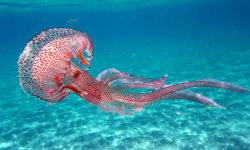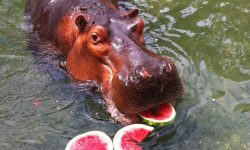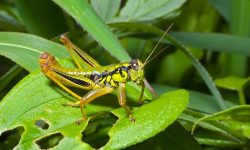Mice are small yet incredibly adaptable creatures that thrive in almost every environment on Earth. Whether they live in forests, fields, cities, or inside our homes, their survival largely depends on one key factor — food. Many people wonder: What do mice eat? The answer is surprisingly diverse.
Mice are omnivores, meaning they eat both plant and animal matter. Their flexible diet allows them to survive in changing conditions and find nourishment even in the most unexpected places. In this guide, we’ll take a closer look at the 20 types of foods that keep mice alive and active, how their diet changes depending on their environment, and what makes their eating habits so fascinating.
Understanding the Diet of Mice

Mice Are Opportunistic Eaters
Mice are opportunistic feeders, meaning they eat whatever is available. In the wild, they prefer seeds, grains, and fruits, while in homes or barns, they’ll consume stored food, crumbs, or even pet food. Their ability to adapt to nearly any diet is one reason they are such successful survivors.
How Often Do Mice Eat?
Unlike large mammals, mice have fast metabolisms and need to eat several times a day. They usually nibble small portions instead of eating large meals. A wild mouse may consume up to 15–20 small meals in a 24-hour period, staying active both day and night to find food.
The Role of Diet in Survival
A balanced diet helps mice maintain energy, reproduce successfully, and stay warm during cold seasons. Their food choices directly affect their behavior, health, and even lifespan. Understanding what they eat gives us insight into their survival strategies and helps control populations in human environments.
20 Foods That Keep Mice Alive and Active
1. Seeds
Seeds are the foundation of a mouse’s natural diet. They are rich in protein, fats, and carbohydrates — essential nutrients that provide quick energy. Wild mice often collect seeds and store them for later, especially before winter.
In human environments, mice are drawn to birdseed, cereal grains, and pantry items like rice or oats. Seeds are easy to find, easy to chew, and extremely nutritious, making them a favorite choice for survival.
2. Grains
Grains such as wheat, corn, and oats are staple foods for both wild and domestic mice. These provide slow-releasing energy that keeps mice active throughout the day. In the wild, they gather grains from crop fields or leftover harvests.
In homes, mice often chew through food packaging to reach stored grains. Their sharp incisors can easily gnaw through paper, plastic, or cardboard, which makes pantry storage a prime target.
3. Fruits
Mice love fruits because of their natural sweetness and high water content. Apples, bananas, and berries are among their favorites. Fruits provide vitamins and hydration, helping them survive when water sources are limited.
In the wild, mice will climb shrubs or trees to find ripe fruits. However, fruit should be eaten quickly since it spoils fast, so mice often consume it on the spot rather than hoarding it.
4. Vegetables
Vegetables are another excellent food source for mice. They supply essential minerals and fiber that support digestion. Mice enjoy carrots, peas, broccoli, and corn kernels.
Wild mice often eat roots and tubers, while pet or lab mice thrive on a balanced mix of vegetables alongside grains and seeds. However, too many watery vegetables can cause digestive problems, so moderation is key.
5. Nuts
Nuts such as almonds, peanuts, and walnuts are a high-calorie favorite for mice. Their dense energy helps them survive long periods without food. In the wild, they often gather nuts and hide them underground for winter storage.
Because nuts are rich in fats and oils, they’re especially valuable during colder months when energy demands are higher. Mice will chew through hard shells easily using their powerful teeth.
6. Insects
Although mice primarily eat plant matter, they also consume insects when available. Beetles, caterpillars, and worms provide protein that supports muscle growth and reproduction.
Mice living outdoors may rely heavily on insects during summer, while indoor mice occasionally feed on household pests. Their omnivorous nature allows them to switch between animal and plant-based diets depending on availability.
7. Meat Scraps
Mice are not picky eaters — they’ll eat small pieces of cooked or raw meat if they find them. Meat provides protein and iron, important for maintaining strength and energy.
In rural areas or barns, mice may scavenge leftovers from animal feed or human meals. While not a primary food source, meat scraps are a valuable addition when other resources are scarce.
8. Pet Food
One of the most common modern food sources for house mice is pet food. Cat and dog kibble are full of fats and proteins, making them irresistible to mice.
Pet owners often notice that food bowls left overnight attract rodents. To prevent infestations, it’s best to store pet food in sealed containers and clean up uneaten portions promptly.
9. Bread and Pasta
Processed grains like bread, pasta, and crackers are convenient foods for mice living near humans. These items are easy to chew and store. The carbohydrates provide fast energy, which keeps mice active and alert.
However, processed foods can lead to weight gain in captive mice. In nature, their diet remains more balanced, but in human environments, they can overconsume starchy foods.
10. Cheese
The old cartoon cliché isn’t entirely wrong — mice do eat cheese, but it’s not their top choice. Cheese is high in fat and protein, but some types are too strong-smelling for mice.
Soft or mild cheeses are more appealing. However, in the wild, cheese isn’t naturally available, so this food mainly appears in human surroundings. It can still serve as an occasional energy-rich snack.
11. Peanut Butter
Peanut butter is one of the best baits for traps because mice love its smell and texture. It’s rich, sticky, and loaded with calories. Just a tiny amount can satisfy a mouse’s hunger.
The fats and sugars in peanut butter make it irresistible, but it’s not something mice find in nature. Instead, it represents how adaptable these creatures are to human environments.
12. Plants and Leaves
Wild mice eat green plants, stems, and leaves to supplement their diet. These contain small amounts of protein and fiber, which aid digestion and hydration.
In spring and summer, when vegetation is abundant, mice eat fresh plants daily. During dry seasons, they rely more on seeds and grains for survival.
13. Roots and Tubers
Roots such as sweet potatoes and tubers provide slow-releasing carbohydrates. Mice dig into the soil to reach these underground food sources, especially in agricultural areas.
This behavior can cause damage to crops and gardens, but it’s a natural part of their survival instinct. The dense nutrients in roots help mice survive during food shortages.
14. Mushrooms
In forested areas, wild mice consume mushrooms and fungi as part of their diet. Mushrooms offer protein, minerals, and moisture, helping them survive in humid habitats.
However, not all fungi are safe — mice instinctively avoid certain toxic species. Their natural sense of smell helps them distinguish safe food from dangerous ones.
15. Eggs
Mice occasionally raid bird nests to eat eggs. Eggs provide concentrated nutrition with fats, proteins, and minerals that help sustain them during harsh weather.
This behavior is more common among field mice or those living near farmlands. While they cannot break large shells, they easily consume cracked or soft eggs when available.
16. Snails and Slugs
In damp environments, mice may eat snails or slugs. These soft-bodied creatures are rich in protein and moisture. It’s an unusual but beneficial part of the diet for certain wild species.
Snails are typically eaten during wet seasons when insects are abundant. This flexible diet allows mice to adapt quickly to shifting environmental conditions.
17. Human Food Scraps
Urban mice thrive on discarded human food. Crumbs, leftovers, and garbage provide endless meals for them. They’re particularly attracted to oily, salty, and sugary items like chips or pastries.
This diet, though calorie-dense, is unhealthy long-term. It often leads to overweight city mice with shorter lifespans compared to their wild counterparts.
18. Stored Pantry Items
Mice are notorious for invading kitchens and pantries. They chew through packaging to access stored foods such as rice, flour, cereal, and sugar.
This habit makes them major household pests. Their droppings and gnaw marks can contaminate food, which is why proper storage is essential to prevent infestations.
19. Animal Carcasses
When times are tough, mice may scavenge dead animals. This behavior is rare but shows their ability to exploit every food opportunity. Carcasses provide dense protein that supports survival in extreme conditions.
This habit is more common among wild mice living in competitive ecosystems where food is limited.
20. Specialized Pellets (for Pet and Lab Mice)
Pet and laboratory mice are typically fed nutritionally balanced pellets. These contain grains, proteins, vitamins, and minerals to ensure optimal health.
Pellets prevent nutrient deficiencies and promote longevity in controlled environments. While less exciting than scavenging, this diet keeps domestic mice healthy and active.
How Mice Adapt Their Diet to Environment
Wild Mice vs. House Mice
Wild mice depend on natural resources like seeds, insects, and plants, while house mice take advantage of human food supplies. Their environment determines what they eat, but both types share the same adaptability.
Seasonal Changes in Diet
During summer, wild mice enjoy fresh fruits and insects. In winter, they switch to stored seeds and nuts. This seasonal flexibility helps them endure extreme weather and scarce food availability.
Frequently Asked Questions (FAQs)
What do baby mice eat?
Baby mice feed exclusively on their mother’s milk for the first three weeks. Once weaned, they begin eating soft grains, fruits, and vegetables before transitioning to adult food.
Do mice need to drink water?
Yes, mice require water daily. However, they can survive on foods with high moisture content like fruits and vegetables if water sources are limited.
Can mice eat chocolate?
Mice are attracted to chocolate’s sweet aroma, but too much can be harmful due to caffeine and sugar content. Small traces are fine, but it’s not recommended as a regular food source.
What foods are toxic to mice?
Certain foods like onions, garlic, and raw potatoes are toxic to mice. Processed junk food, salty snacks, and alcohol are also harmful and can shorten their lifespan.
Do mice eat insects or meat?
Yes. Mice are omnivorous and eat insects, small worms, and occasionally meat scraps when available. These animal proteins support healthy muscle development.
Conclusion
Mice are remarkable survivors thanks to their flexible diet and sharp instincts. From grains and seeds to insects and human leftovers, they can eat almost anything that provides nutrition. This adaptability explains why mice are found in nearly every corner of the world.
Understanding what mice eat not only gives insight into their biology but also helps humans manage coexistence with these tiny yet resourceful creatures. Whether in nature or in your home, mice remain one of the most adaptable eaters on Earth.






